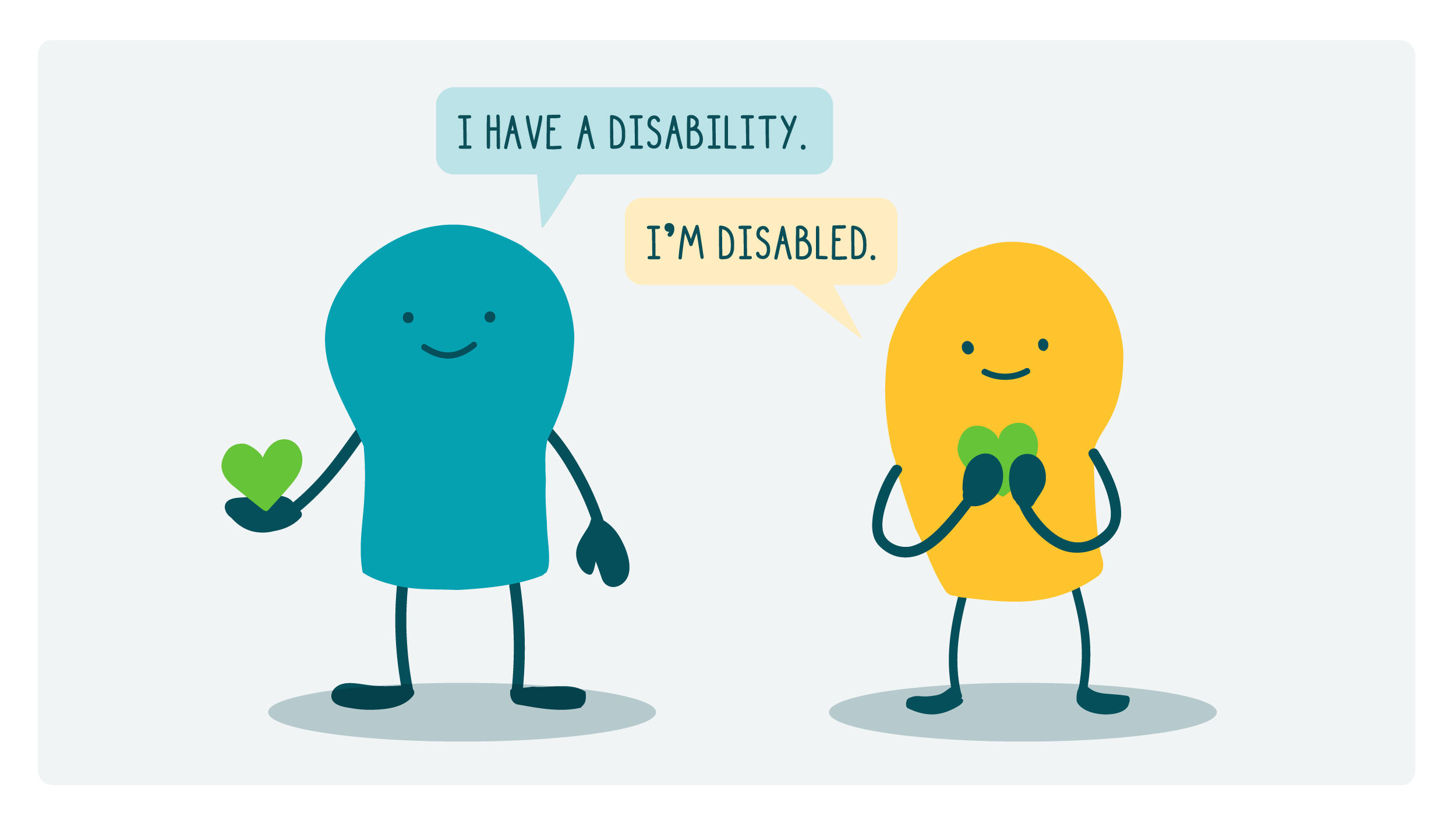
If you’re like us, you learned to say “people with disabilities” and not to say “disabled people.” This is an example of person-first language, which we typically learn is the most respectful approach to identity-related terminology. But we’ve noticed a shift in conversations about disability, with more people self-identifying as “disabled” and using the phrase “disabled people.” We’re paying close attention since we know that understanding how our audiences describe themselves — and why — helps us create inclusive materials that resonate.
Why are more people using “disabled”? Well, we certainly can’t speak for everyone — but for some, especially people who have experienced ableism or discrimination, embracing “disabled” is a way to reclaim disability as part of their identity. Although “people with disabilities” is often framed as the more inclusive approach, some disabled folks argue that it actually perpetuates stigma by separating them from their disability (you’d never say “person with womanhood” or “people with gayness”!) and making disability-related language in general feel like something not for use in polite society.
So in the same way that LGBTQ+ people have reclaimed the word “queer,” some people call themselves “disabled” to challenge that stigma — and many people find healing in the visibility that the term brings. This can be especially important for people who learned to hide their disability at an early age because trusted (and often well-meaning) adults taught them to assimilate into a world designed for non-disabled people. The unspoken lesson for those folks was that disability is a problem to be fixed.
The phrase “disabled people” also reminds us that, like health literacy, disability involves interactions between people and systems. Some advocates argue that ableist systems make people “disabled” by making it hard (or even impossible!) for them to access public spaces and participate in society. Of course, even in an ableism-free world, living with a disability would come with challenges. But as health communicators, we’re all about dismantling stigma and bias — and recognizing how ableism harms disabled folks is a good place to start.
What does all this mean for our health communication materials? As with many health comm challenges these days, there’s just no simple answer — the key is to get to know your audience and take your cue from them. People involved in disability activism, self-advocacy, or online disability communities are more likely to self-identify as disabled. So if you’re looking for it, you’ll probably see it pop up in conversations about equity and social justice. (We elected to use “disabled” in our Framework for Equity-Centered Health Communication, for example.)
We’d love to hear from you, dear readers, about how your organization handles this — especially if you write materials for disabled people. Drop us a line by responding to this email or tweeting @CommunicateHlth.
The bottom line: Many people have chosen to reclaim the word “disabled” for themselves. Understanding why can help us create materials that resonate with our audiences.
Tweet about it: This week, @CommunicateHlth explores why many people choose to reclaim the word “disabled”: https://bit.ly/3nR0oFK
Browse recent posts